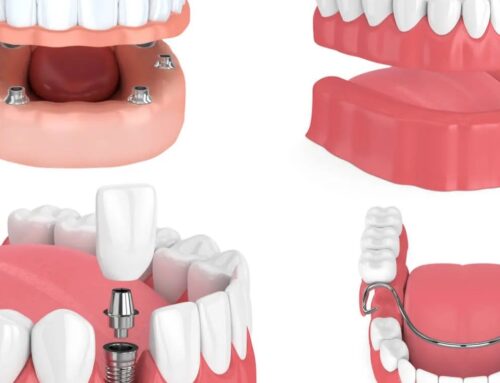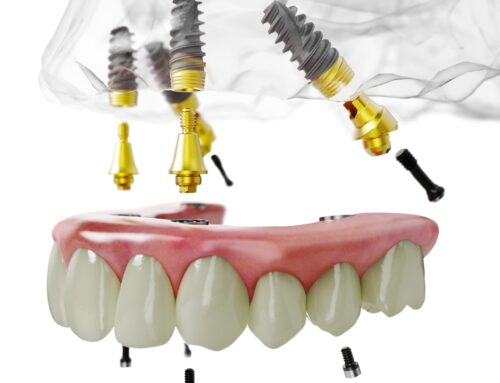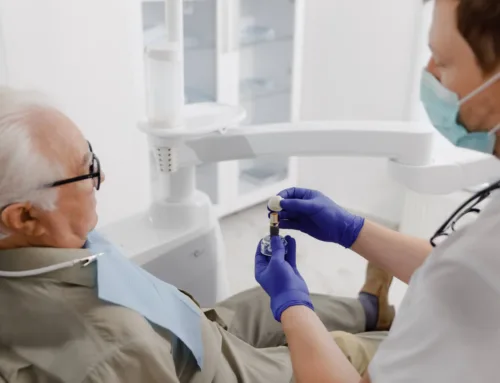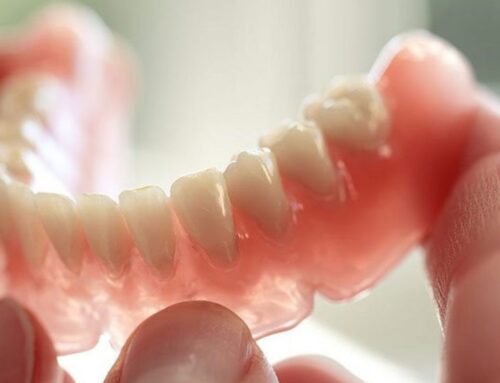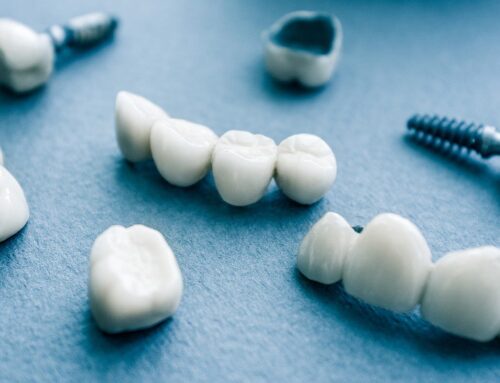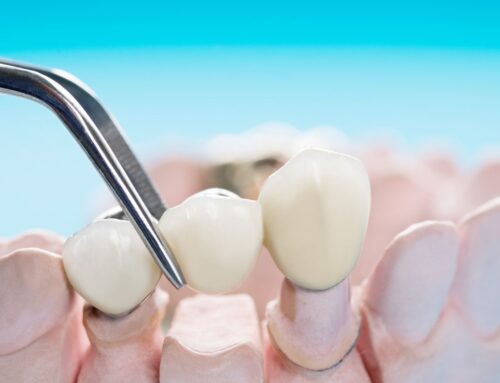When Do You Repair Damaged Teeth, or Replace with Implants?
Teeth can become damaged for a wide variety of reasons, and they can also be treated in several unique ways depending on the type and extent of the damage. In some cases, this might mean the tooth would be repaired and restored back to full function, while in other situations it may be necessary to remove the tooth entirely and replace it with an artificial dental implant.
Taking care of your smile is much more than just brushing and flossing and visiting your dentist regularly. It also means taking prompt action to address any dental problems that may occur in order to prevent more serious conditions from developing. If you find yourself in a situation where one of your teeth has become damaged, the best idea is to book an appointment with your dentist right away to have the damage evaluated and learn about the options you have available to repair the tooth.
Often, the optimum treatment for a broken tooth depends on the type of damage it sustained and how severe it is. To get a better idea of this, it’s important to first examine the various types of tooth damage that can occur, and how these situations may arise.
How Do Teeth Become Damaged?
Perhaps the most obvious way that a tooth might get broken is through a sudden impact with a hard object or surface. For example, a trip and fall that results in the face impacting a hard surface can certainly cause a tooth to become chipped, cracked, or loosened. Sporting accidents, such as a forceful impact from a hockey puck or baseball, are also examples of how a tooth might get damaged. In addition, biting down on a solid object such as a metal fork or hard piece of food can sometimes cause chips or cracks to form in a tooth. Teeth damaged in these ways can have sharp or irregular edges on them and can adversely affect the bite pattern, leading to more serious problems.
Physical impacts are not the only way that a tooth can become damaged. Tooth decay is another common reason why a patient might need a repair or replacement to be performed. As the teeth are used to eat and chew, saliva mixes with the food and digestion begins, resulting in the deposit of bacteria on the teeth and around the gums. Brushing and flossing regularly removes these bacterial deposits, but if they are allowed to accumulate and remain they will continue to produce an acidic environment in the mouth that gradually erodes the hard enamel of the teeth. This erosion eventually leads to cavities in the teeth which can grow quite large if left untreated, requiring a more extensive repair and restoration procedure or even replacement in more severe cases.
In either case, whether from a physical impact or due to tooth decay, damage to a tooth must not be permitted to remain untreated. Leaving damaged teeth alone simply allows the negative effects to compound over time, eventually leading to more damaged teeth and other serious health problems such as periodontitis, gum disease, tooth misalignment, and infections, to name just a few. Let’s explore the various methods that are used to treat damaged and broken teeth.
What Methods Are Available to Treat and Repair Damaged Teeth?
Fillings – Cavities are the most common type of damage that occurs in teeth. They can be managed with regular preventative care. Small cavities are treated rather easily using fillings. First, the damaged area of the tooth is cleaned and the decayed section of the tooth is drilled out, leaving a space surrounded by healthy and strong tooth material. Into this space, dental amalgam is placed to restore the integrity of the tooth. This material is color-matched to the tooth and nearly indistinguishable, making the repair subtle and not visibly apparent.
Dental Bonding – In the case of larger cavities, chips, cracks, and missing tooth material, dental bonding will be used to conduct the repair. The damaged section of the tooth is smoothed and shaped to create an optimum surface for the ultra-hard dental bonding material to adhere to. Bonding starts out as a malleable tooth-coloured substance that can be shaped to perfectly fit the missing portion of the tooth. It is then hardened and cured using a specialized light emitter. The dentist then makes some final adjustments to the repair and gently files down any spots that are too high on the tooth, leaving the patient with a fully restored tooth.
Dental Crowns – For situations where there is extensive damage to the biting surface of a tooth, a more comprehensive repair is needed. First, the surface of the tooth is cleaned and shaped to remove the damaged material and create a smooth area to which an artificial dental crown will be attached. Using a permanent dental adhesive, the replacement crown is affixed to the cap of the natural tooth. Artificial crowns are custom-made to match natural tooth shades, and are virtually identical in appearance to the other teeth in the patients’ smile.
When Would a Dental Implant Be Used to Replace an Entire Tooth?
If none of the other repair options are determined to be sufficient to treat the extent of the damage, your dentist will likely recommend an extraction of the affected tooth. For example, in the event that tooth decay has progressed to the point where it has entered the inner pulp or the root of the tooth, it may be too far gone to repair. Large chips in the teeth or cracks that are deep enough to expose the nerve of the tooth are also cases where tooth extraction may be necessary.
When this happens, a gap will be created in the smile that will need to be corrected in order to restore the appearance of the patients’ smile and to give back full function to the mouth. This is very important, as leaving a missing tooth untreated can lead to other dental health problems, speech impediments, and difficulty eating. One of the most important reasons to replace a lost tooth is to prevent long-term degradation of the jawbone. You see, teeth exert pressure on the jaw as we use our mouths to chew and speak. This pressure stimulates the body’s natural processes to strengthen the bones. When teeth become missing, those particular areas of the jaw don’t receive as much stimulation, thereby causing a gradual decrease in the strength and density of the bone where the missing teeth were located.
For all these reasons, replacing the missing tooth with a permanent dental implant is generally considered to be the best approach. The process itself is fairly simple. To begin, up-to-date x-rays will most likely be obtained in order to get a clear view of the structural integrity of the jawbone. This is necessary to ensure that the bone in the area has not also been damaged and is strong and dense enough to adequately bond to the implant once it is in place.
During the implant procedure, the patient will be sedated to the appropriate level and the area of the missing tooth will be prepared to accept the replacement tooth. The gum tissue will be manipulated to provide easier access to the underlying bone, and the hole in which the implant will be inserted will be opened. The base of the implant resembles a metal screw, and is made from an advanced dental composite material that is engineered to form a strong bond with the bone. Atop the base will be fastened an artificial dental crown, and the implant procedure will be finalized.
Recovery from a dental implant typically takes a few days, and most patients experience some mild soreness and tenderness in the area that can be managed with anti-inflammatory medication and pain relievers. After a short time, you’ll likely visit your dentist for a follow-up appointment to check on the implant and ensure that the area has fully healed.
Take Care of Damaged Teeth Right Away to Avoid Bigger Dental Problems
At the end of the day, regardless of what type of tooth damage has occurred and what the ideal solution might be, it’s essential to act fast in order to achieve the best possible outcome. The longer a damaged tooth stays in place, the more risk the patient will run of developing other more serious conditions. If you or someone in your family has experienced a recent accident that caused damage to a tooth, or cavities are forming in one or more teeth, your best option is to contact the team here at Georgian Dental today to arrange for an appointment at the earliest possible opportunity. Our friendly staff will be glad to answer any questions you have and make sure that you receive the right treatment for your damaged tooth. We look forward to helping you keep your smile healthy, strong, and in beautiful style!
Appointment Request
If you’re interested in any of our procedures, and would like to meet with one of our dentists to discuss options, costs and get additional information, complete this short form and we’ll give you a call to arrange for a no-obligation appointment at our Barrie clinic.

